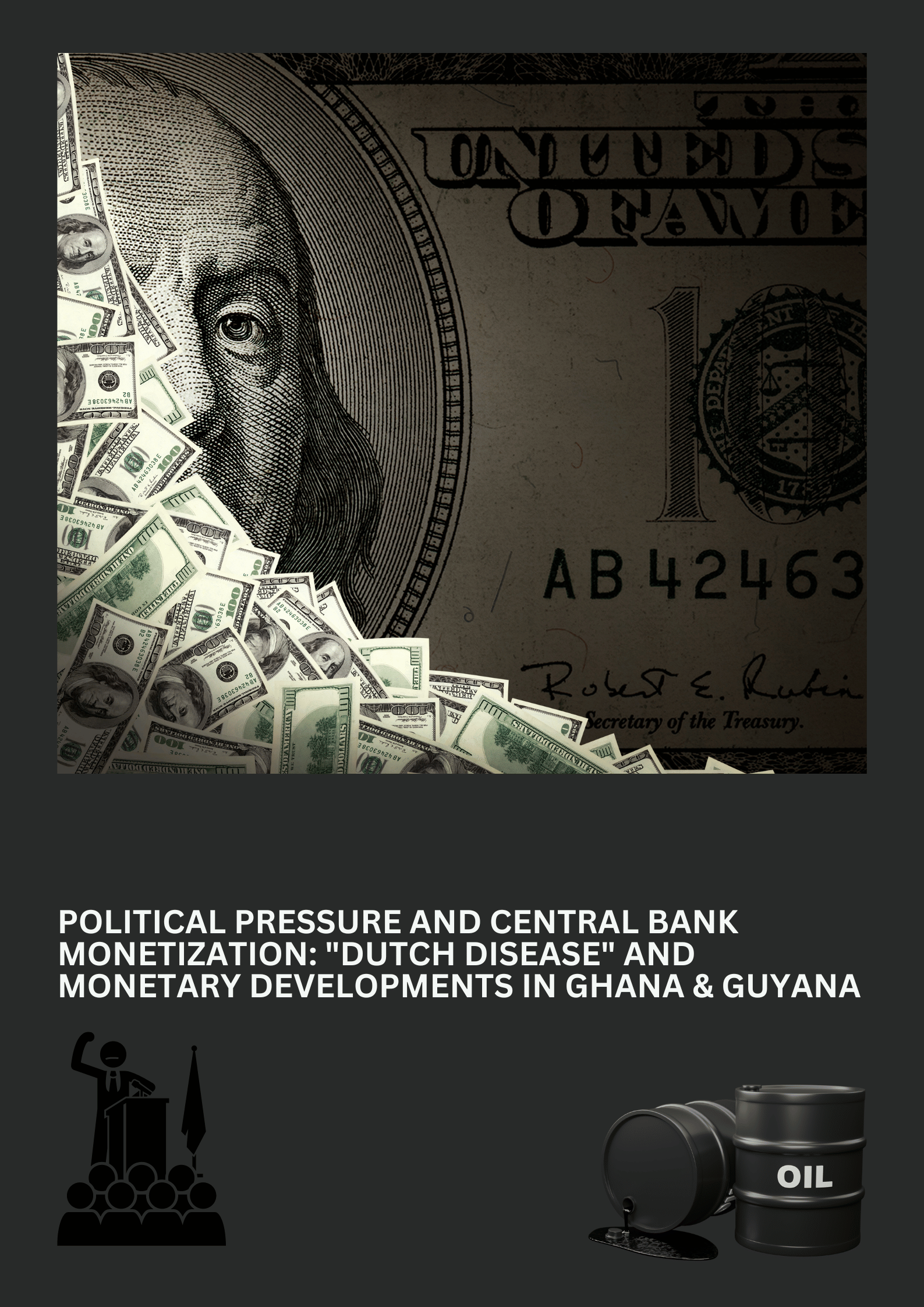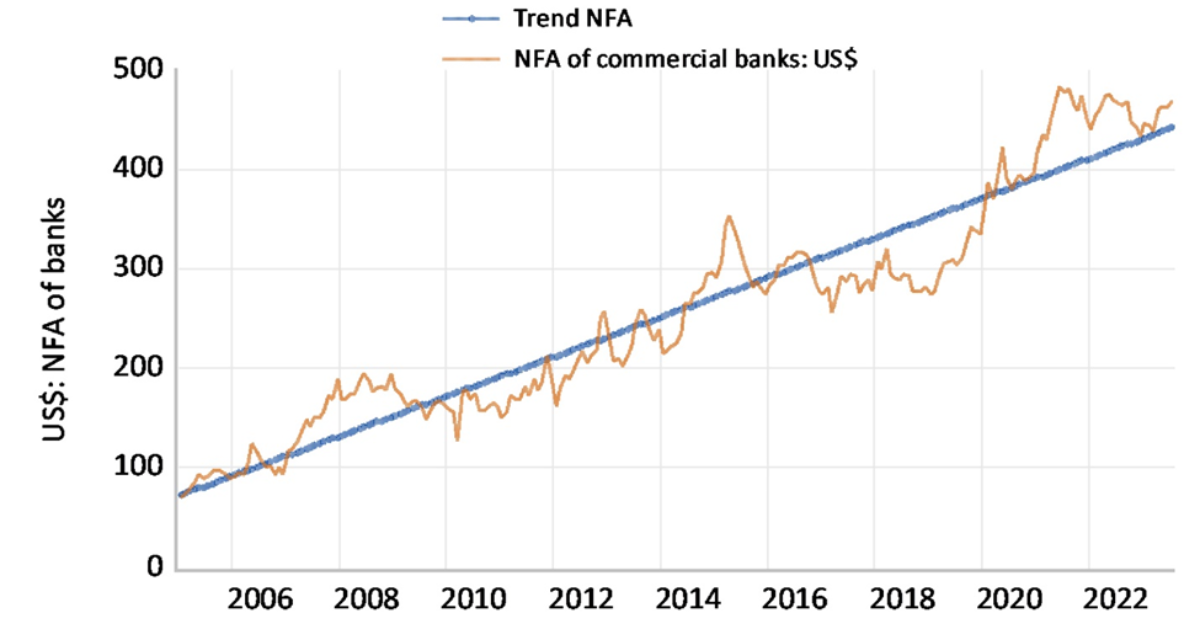Making prediction in a complex and nonlinear world often involves identifying initial conditions and then sequentially reasoning (or solving) forward. One way of knowing how well Guyana will do with its newfound oil and gas resources is to consider the initial conditions that exist in the country today. In this column and future ones, I will identify several of these prevailing initial conditions.
One such initial condition is the very limited policy-relevant research capacity in the public service and quasi-government organizations. I have no doubt that this deficiency, coupled with the indifference of several Guyanese politicians as it relates to intellectual input, played a role in the lopsided contract with ExxonMobil subsidiaries. In an ideal situation the central bank and the Ministry of Finance ought to house these research departments that would collaborate with University of Guyana and far afield. These researchers would have access to data bases, software, fast internet and literature that would help them to identify and figure out policy-relevant questions. The politicians will need to ask the right questions as well. The Central Bank of Barbados, for example, has traditionally researched all kinds of questions pertaining to Barbados such as monetary policy, debt management, fiscal policy, green economy, tourism, public sector management and many others.
The Ministry of Natural Resources seeks a consultant or a guest speaker (usually a foreign politician) every time it needs to find out something about the oil and gas sector. However, Natural Resource Economics and Energy Economics are branches of standard applied microeconomics, which has the same core content whether it is being taught at Harvard University, University of Cambridge, University of West Indies or University of Guyana. Understating basic physics, particularly with some rudimentary calculus, will make a fine policy-relevant energy economist. However, it’s still 90 plus per cent applied microeconomics.
Indeed, UG has an economics degree programme that teaches a core of microeconomic theory and applied fields. Therefore, this capacity ought to exist in Guyana today. A group of bright young and mathy researchers working as civil servants would be flexible enough to deploy core theory training gained at UG to understanding events in the global oil industry over a very short period of time. That is the whole idea of a broad core training. It is meant to create critical thinkers who can quickly adapt and address different issues.
The reason this capacity does not exist in the civil service is because the political class does not see the necessity of these research centres, which can provide guidance for policy making similar to what the Congressional Budget Office economists do for Congress or the Council of Economic Advisors at the White House does for the President. In Guyana, however, the first order of business after winning the election is the domination of key positions in the civil service by party supporters without regard for technical competence.
But this has recently levied a large and quantifiable financial cost on Guyana as it relates to the production sharing agreement (PSA). The country missed out on about US$200 million in signing bonus. As it relates to royalty, the country is sacrificing about US$108 million per year for the life of the offshore oil project, assuming 8% royalty at US$50 per barrel and 120,000 barrels per day. If production scales up to 400,000 barrels per day by 2025, the same US$50 barrel will result in royalty sacrifice of US$360 million per year for the rest of the project, say 20 years. Note, Guyana will receive 2% royalty, so effectively the country is losing out on 6 percent points of royalty, which is taken into account in my calculation above. Therefore, thinking as a pure politician has already levied a severe financial cost on Guyanese.
These researchers could have alerted the Guyanese politicians that British Petroleum paid Angolan government US$111 million in signature bonus for one block in 2002. The global accounting firm KPMG later reported that Angola received a total of US$335 million in signature bonuses from BP and other companies for just block 31. Chad received, again in the early 2000s as noted by the IMF, US$40 million in signature bonus and US$2 million in production bonus. However, US$10 million of the signature bonus was deductible as cost, thereby resulting in an effective bonus of US$32 million. These two cases are instructive because, like Guyana, Angola had a production sharing contract as opposed to a concession-based contract. Chad had a hybrid rule of contracting-based and concession-based contract.
As it relates to royalties, Guyana is going to miss out significantly for the life time of the project. The 2% royalty is very low by the global standard which appears to average around 8%. Although the 50-50% profit split seems reasonable, albeit regressive, the Guyanese government was never able to release any information of what they believe the average cost of extracting a barrel of oil will be. This is the pivotal number as economists in the civil service would have indicated. There is a 75% cap on cost recovery, but on what average cost number? No investor starts a business, let alone ExxonMobil, without having a basic idea of the average cost. Is it 75% of US$20 cost per barrel or 75% of US$40 cost per barrel? The investment bankers and the market analysts know this number.
At the Oil and Gas Governance Network (OGGN), we are using the IMF’s average cost of US$20.4 per barrel; however, in press conferences to shareholders both Hess and ExxonMobil implied it is below US$20 a barrel. Pinning down the average cost of production will make all the difference in realization of profit oil throughout the 20 plus years of production. One does not need to be an energy economist to get this. This is second year intermediate microeconomics, which is taught at UG.
As an economist, I have to say the weakness of the production sharing agreement (PSA) is more striking in terms of the economic aspects than the legal framework. It is clear to me that the negotiators were not fed with a wealth of economic information that existed in 2015 and early 2016 during the negotiations. No doubt when early visionaries like Forbes Burnham and Cheddi Jagan established UG they had building this exact this kind of capacity in mind.
No foreign politician or former CEO giving a lecture at Guyana Marriott on oil and gas matters can substitute for this kind of daily indigenous capability, which ought to have existed since UG has a degree programme in economics. I have interacted with several of these kids over the past 10 years and they are good as the top 5% of graduates in North America. That the capacity does not exist rests squarely on the incapacity of the present political class to mobilize them and ask the pertinent questions.
Overcoming this adverse initial condition may not be as difficult as the ones I will discuss in the next column. It requires urgently establishing about two or three research centres in the public service and feeding them with the required data. Traditionally the Research Department of the central bank is one place that houses this kind of activity. I would think State Planning at Ministry of Finance is the next place. Institute of Development Studies (IDS) at University of Guyana is another natural candidate for this kind of work. IDS is ideally suited for multidisciplinary work relating to the coming oil sector, green economy, mental health issues, crime, suicide, etc. However, the government will have to address the culture of consultancy, whereby economic and social research never get done for the greater good and career mobility, but only for a consultancy stint.
By Tarron Kmemraj
Feb 24th, 2018
Comments: tkhemraj@ncf.edu









